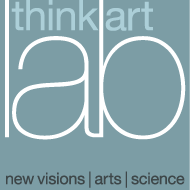
On Deconstructing the Hype
At the beginning of our study we learnt that the Web is at least distributed, decentralized and an open world.
The Web is distributed. One of the driving factors in the proliferation of the Web is the freedom from a centralized authority.
However, since the Web is the product of many individuals, the lack of central control presents many challenges for reasoning with its information.
First, different communities will use different vocabularies, resulting in problems of synonymy (when two different words have the same meaning) and polysemy (when the same word is used with different meanings).
There is no reason to deny this description at least as a starting point. Remember, the description of the weather system sounds very similar. But all these emphasis of the openness and decentralized distributedness of the Web is describing not much more than the very surface structure of the Web. It emphasize the use of the Web by its users not the definition and structure, that is, the functioning of the Web. There are no surprises at all if we discover that the structure of the Web is strictly centralized, hierarchic, non-distributed and totally based on the principle of identity of all its basic concepts. The functioning of the Web is defined by its strict dependence on a "centralized authority".
If we ask about the conditions of the functioning of the Web we are quickly aimed at its reality in the well known arsenal of identity, trees, centrality and hierarchy.
Why? Because the definition of the Web is entirely based on its identification numbers. Without our URIs, DNSs etc. nothing at all is working. And what else are our URIs then centralized, identified, hierarchically organized numbers administrated by a central authority?
Again, all this is governed by the principle of identity.
"We should stress that the resources in RDF must be identified by resource IDs, which are URIs with optional anchor ID." (Daconta, p. 89)
What is emerging behind the big hype is a new and still hidden demand for a more radical centralized control of the Web than its control by URIs. The control of the use, that is of the content of the Web. Not on its ideological level, this is anyway done by the governments, but structurally as a control over the possibilities of the use of all these different taxonomies, ontologies and logics. And all that in the name of diversity and decentralization.
All the fuss about the freedom of the (Semantic) Web boils down to at least two strictly centralized organizational and definitorial conditions: URI and GOL.